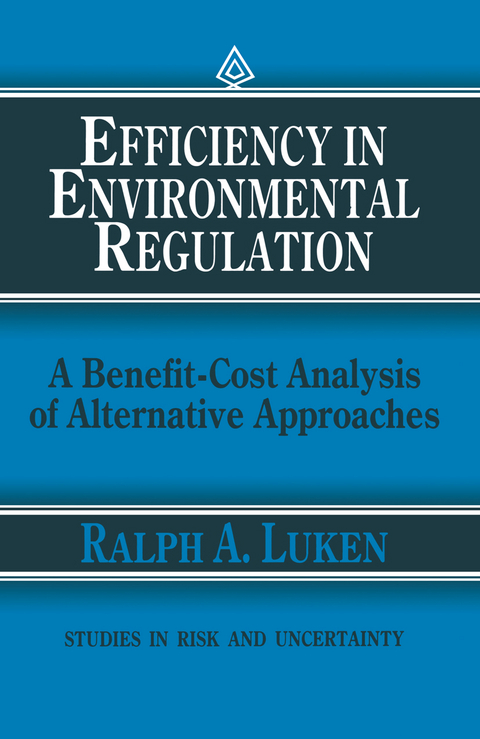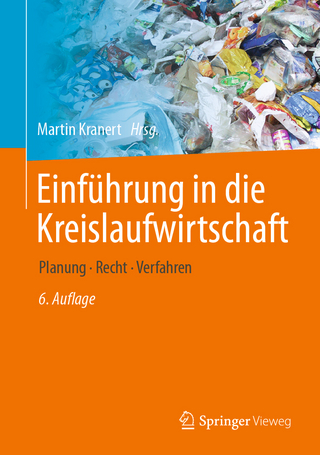
Efficiency in Environmental Regulation
Springer (Verlag)
978-94-010-6816-1 (ISBN)
1. Introduction.- 2. Regulatory Approaches.- Elements of a Regulatory Program.- The Clean Water Act.- The Clean Air Act.- The Resource Conservation and Recovery Act.- 3. Technology Approach.- Pollution Control Costs And Effluents.- Water Quality Impacts.- Monetary Benefits.- Findings.- Appendix 3-A. Costs for Indirect-Discharging Mills.- Appendix 3-B. Pulp and Paper Mills Evaluated in this Study.- Appendix 3-C. Water Pollution Control Cost Estimation.- Appendix 3-D. Water Pollution Control Cost Comparisons.- Appendix 3-E. Loadings Data.- Appendix 3-F. Water Quality Model.- Appendix 3-G. Model Validation.- Appendix 3-H. Visitation Estimates.- Appendix 3-I. Recreation Benefit Studies.- Appendix 3-J. Sensitivity Analysis for Benefit Calculations.- 4. Ambient Approach.- Pollution Control Costs and Emissions.- Air Quality Impacts.- Monetary Benefits.- Findings.- Appendix 4-A SO2 Emissions and Costs.- Appendix 4-B. Pulp-Producing Mills Evaluated in this Study.- Appendix 4-C. Air Pollution Control Costs (TSP).- Appendix 4-D. Air Pollution Control Cost Comparisons.- Appendix 4-E. Loadings Data.- Appendix 4-F. Air Quality Model.- Appendix 4-G. Emissions Versus Concentrations.- Appendix 4-H. Model Validation.- Appendix 4-I Derivation of Concentration Response Functions for Health Effects.- 5. Benefits Approach.- Pollution Control Costs and Emissions.- Air Quality Impacts.- Monetary Benefits.- Findings.- Appendix 5-A Kraft Pulp Mills Evaluated in this Study.- Appendix 5-B. Air Pollution Control Cost Estimation (TRS).- Appendix 5-C. TRS Emissions.- Appendix 5-D. The MPTER Model.- 6. Compliance.- Measuring Compliance.- Water Compliance.- Air Compliance.- Findings.- 7. Growth.- Conventional Water Pollutants.- Criteria Air Pollutants - TSP.- Designated Air Pollutants - TRS.- Findings.- Appendix 7-A. 1984—1994 TRS Emission Reduction Policies.- 8. Toxic Pollutants.- Water Pollutants - Dioxin.- Chloroform - Air Pollutant.- Chloroform - Hazardous Waste.- Findings.- Appendix 8-A. Mills in the TOX Analysis.- Appendix 8-B. Critique of the Chloroform Risk Assessment.- Appendix 8-C. Process Modification Costs.- Appendix 8-D. Mill-Specific Costs for Hypochlorite Elimination.- Appendix 8-E. Mill-Specific Costs for Chloroform Reduction.- 9. Conclusions.- Regulatory Approaches.- Historical Perspective.- Future Direction.- Appendix A. The Pulp and Paper Industry.- Industry Profile.- Capacity.- Geographic Distribution.- Standard Manufacturing Processes.- Preparing Raw Material.- Pulping.- Bleaching of Wood Pulps.- Papermaking.- Converting.- Sources of Wastes.- Water Effluents.- Air Emissions.- Solid Wastes.- Estimated Generation of Wastes.- Appendix B. Mills Evaluated in the Study.- Appendix C. Inflation Indexes.- Appendix D. Glossary of Environmental Terms.- Author Index.
| Reihe/Serie | Studies in Risk and Uncertainty ; 1 |
|---|---|
| Zusatzinfo | 400 p. |
| Verlagsort | Dordrecht |
| Sprache | englisch |
| Maße | 155 x 235 mm |
| Themenwelt | Naturwissenschaften ► Biologie ► Ökologie / Naturschutz |
| Technik ► Umwelttechnik / Biotechnologie | |
| Wirtschaft ► Volkswirtschaftslehre ► Mikroökonomie | |
| ISBN-10 | 94-010-6816-X / 940106816X |
| ISBN-13 | 978-94-010-6816-1 / 9789401068161 |
| Zustand | Neuware |
| Informationen gemäß Produktsicherheitsverordnung (GPSR) | |
| Haben Sie eine Frage zum Produkt? |
aus dem Bereich


